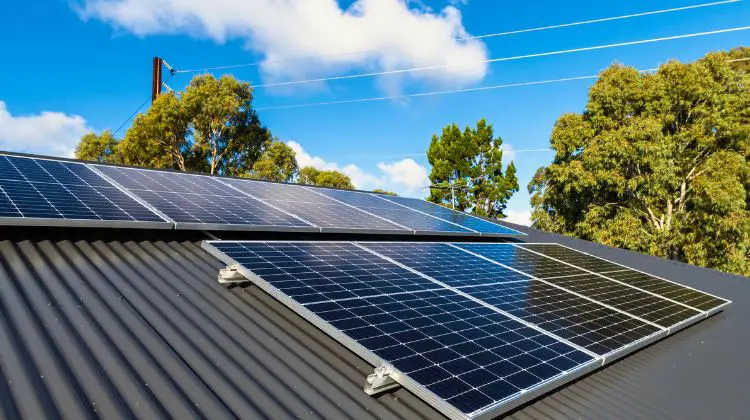You work hard for your money, and you probably feel the sting every time you open your electric bill. It seems like those numbers just keep climbing. For many families, solar power felt like a path to predictable energy costs and some much-needed savings, but the cost to get started was always a major hurdle. A recent government decision to have the EPA end a low income solar program has unfortunately made that hurdle even higher for thousands of people.
This move is a big deal, and it affects more than just the households that would have directly benefited. It sends ripples through the renewable energy industry and raises questions about our country’s climate goals. Because the EPA ends a low income solar program, the dream of affordable clean energy just moved further out of reach for many hardworking Americans.
Table of Contents:
- What Exactly Was the Solar for All Program?
- EPA Ends Low Income Solar Program: What Happened?
- State-Level Ambitions Halted
- Who Loses Out When Solar Becomes Less Accessible?
- A Legal Battle on the Horizon?
- What This Means for the Future of Solar and Your Home
- Conclusion
What Exactly Was the Solar for All Program?
To grasp the impact of this decision, we first need to understand what has been lost. The “Solar for All” program was a cornerstone of the previous administration’s climate policy, not just a minor grant program. It was a massive $7 billion initiative, a key part of the larger Greenhouse Gas Reduction Fund created by the Inflation Reduction Act passed under President Joe Biden.
The goal of this Biden-era grant program was ambitious and direct: help more than 900,000 low-income households gain access to solar energy. This billion Biden-era grant was not solely about environmentalism. It was about delivering tangible, real-world benefits to people struggling to make ends meet and facing high electricity costs.
This program was meant to tackle two problems at once: cutting pollution and slashing utility bills for those who could least afford them. The Environmental Protection Agency estimated the billion solar project would save families a combined total of over $350 million on their electricity bills every single year. For a family on a tight budget, that kind of savings is not just helpful; it can be transformative, freeing up money for groceries, healthcare, or education.
How the Program Worked
The $7 billion in energy funding was not distributed directly to individual homeowners. Instead, the EPA awarded the money to 60 different state, territorial, and tribal programs, making them the official grant recipients. This decentralized approach allowed local leaders to develop plans that best suited the specific needs of their communities.
For example, some of the appropriated funds were earmarked for installing rooftop residential solar panels on single-family homes at no upfront cost to the low-income residents. Other funds were directed to support community solar projects, a critical option for people who rent or live in apartments. These projects allow participants to buy into a larger, local solar farm and receive credits on their electricity bills, making low-income solar accessible without homeownership.
The program also supported the development of battery storage and distributed solar projects. Battery storage is crucial for a reliable green energy grid, as it stores solar power for use at night or during power outages. For communities in areas prone to extreme weather, this added resilience could keep essential appliances running when the main grid fails, providing a critical lifeline.
EPA Ends Low Income Solar Program: What Happened?
The news, first reported Tuesday, came as a shock to many states and communities that were counting on this assistance. The Trump administration announced it would be shutting down the Solar for All program. This decision is part of a broader policy shift aimed at rolling back climate initiatives from the Biden administration and refocusing national energy policy on fossil fuels.
The official justification points to a massive new spending and tax bill. According to a social media post from EPA Administrator Lee Zeldin, this new law effectively repeals the Greenhouse Gas Reduction Fund, which was the financial backbone of the entire Solar for All initiative. EPA Administrator Lee did not, however, provide a clear timeline for how the program would be wound down, leaving grant recipients in limbo.
Administrator Lee Zeldin also suggested he would not “keep this boondoggle alive,” reflecting a viewpoint that the program was wasteful. This leaves states and communities in an incredibly difficult position with their funding frozen. Energy offices and authorities that had already been awarded funds and were actively designing local programs to help families reduce energy bills now face immense uncertainty.
State-Level Ambitions Halted
The sudden halt to this billion Biden-era grant program stopped numerous state-level initiatives in their tracks. These weren’t just abstract plans; they were detailed strategies to bring solar access to disadvantaged communities. The decentralized model meant that each state could target its unique challenges, from urban housing complexes to rural, remote homes.
For example, an energy authority in a state with a large rural population could focus on deploying individual solar arrays. In contrast, a densely populated state might prioritize community solar projects on large commercial rooftops. This flexibility was a key strength of the program.
Here is a look at how a few states might have planned to use their portion of the funds, illustrating the tangible projects that are now in jeopardy.
| State/Entity | Potential Program Focus | Primary Beneficiaries | Estimated Impact |
|---|---|---|---|
| Arizona | Rooftop solar grants for homes in extreme heat zones. | Low-income families in Phoenix and Tucson. | Reduced cooling costs and improved grid stability during summer peaks. |
| North Dakota | Community solar development near small towns. | Renters and residents of multi-family housing. | Provided solar benefits to those without suitable roofs for installation. |
| West Virginia | Workforce training and installation on former mining lands. | Unemployed or underemployed former coal workers. | Created new jobs in the renewable sector while repurposing land. |
| Alaska Energy Authority | Microgrids with solar & battery storage for remote villages. | Indigenous communities reliant on expensive diesel generators. | Dramatically cut high energy costs and increased local energy independence. |
The work of the Alaska Energy Authority is particularly notable, as their plan for Alaska energy independence in remote areas represented a lifeline. For these and many other states, the loss of the Gas Reduction Fund means these carefully constructed plans may never be realized.
Who Loses Out When Solar Becomes Less Accessible?
When you pull the plug on a program like this, the first and most immediate victims are the people it was designed to serve. Low and moderate-income families often face the highest “energy burden.” This means a larger percentage of their total income is spent on utility bills compared to wealthier households, leaving less for food, medicine, and other essentials.
As Sanya Carley, a professor of energy policy at the University of Pennsylvania, explained, having solar allows families to redirect those savings. With inflation affecting the cost of nearly everything, losing this potential financial relief is a significant blow for low-income communities. The dream to reduce energy bills through solar just became much more difficult.
It also deepens the clean energy divide. Access to solar power and its benefits shouldn’t be a luxury reserved for the affluent. Ambitious low-income solar programs like Solar for All were specifically created to democratize solar energy and correct this imbalance, making the clean energy transition more equitable.
The Ripple Effect on Your Wallet
This decision might feel distant if you were not directly eligible for this specific grant program. However, the economic effects can spread widely. When a significant portion of the population is trapped by high energy costs, they have less disposable income to spend in their local economies.
Consider a young family that could have saved $60 a month on electricity. That’s $720 a year that could have gone toward car repairs, saving for a down payment, or starting a college fund. Multiplied across the 900,000 households the program aimed to serve, the cumulative economic impact is substantial.
Furthermore, this Biden-era grant program was set to stimulate job growth, particularly in workforce training. Installers, developers, electricians, and lending institutions were all preparing for these projects. Cutting solar funding puts thousands of potential new jobs at risk, hurting local economies across the country at a time when growing industries are needed.
Climate Goals and Community Resilience
Of course, we cannot ignore the environmental cost of canceling a major greenhouse gas reduction initiative. As Costa Samaras from Carnegie Mellon University notes, we need every clean energy project we can get to meet climate goals. The decision by the Trump EPA is a significant step backward in the national effort for environmental protection.
The projects funded by the Solar for All Reduction Fund would have substantially cut greenhouse gas emissions, a key goal of the Environmental Protection Agency. Removing that potential makes it much harder to achieve national climate targets. The decision feels like a fumble in the final seconds of a college football championship game for communities that were counting on the savings and the cleaner air.
Beyond emissions, there is the critical issue of community resilience. The growing demand from new, power-hungry data centers is already straining our national grid. Community solar and battery storage projects make our local energy supply more stable and less dependent on a centralized, vulnerable grid, a benefit that is now lost for many.
A Legal Battle on the Horizon?
This story may not be over. Grant recipients who were already awarded money are exploring legal action, arguing that the administration does not have the statutory authority to revoke funds that were already committed. Their argument centers on a simple but powerful concept: the money from the Gas Reduction Fund was already legally obligated by the protection agency.
Jillian Blanchard with Lawyers for Good Government, a group advising some of these recipients, has stated they are prepared for a court battle. They contend the new law only rescinded a small fraction of uncommitted money from the larger fund. Community advocate Michelle Moore, in a statement published Aug. 10th, added, “A promise was made to these communities, and that promise must be honored.”
This sets the stage for a major legal confrontation between the federal government and a coalition of states, tribes, and non-profit organizations. The outcome could set a powerful precedent for the security of other federally appropriated funds. The question of whether an administration can cancel funds approved by a previous Congress will be central to the fight.
What This Means for the Future of Solar and Your Home
So, what does this all mean for you? This decision introduces significant uncertainty into the renewable energy market. The abrupt cancellation of a multi-billion dollar program could make some installers and investors nervous about the stability of government support for the solar industry.
However, it is important not to lose hope. The Solar for All program, while significant, was just one piece of the solar energy puzzle. There are still other federal tax credits available, like the Residential Clean Energy Credit, that can help lower the cost of a home solar installation. Many states and even local utility companies also offer their own rebates and incentives, separate from these existing low-income solar programs.
If you have been considering going solar, you should still perform your due diligence. The economics might still work for your family, especially as the cost of solar technology continues to fall. This news is a setback for national policy, particularly for existing low-income residents, but it does not signal the end of the entire solar industry. President Donald Trump, who often spoke of “big beautiful” projects, is now overseeing an administration cutting solar access, but the private market continues to innovate.
What this situation does highlight is the critical importance of these support programs. As President Donald Trump has shifted policy, the role of such initiatives becomes clearer. They help make new technology accessible to everyone, not just a select few, and contribute to building a more stable, affordable, and clean energy system for the entire country.
Conclusion
The choice to have the EPA end a low income solar program is far more than a simple line item in a federal budget. It is a decision with real and painful consequences for American families who are trying to get ahead and manage rising electricity bills. It halts progress on making clean energy affordable for everyone and undermines national efforts to build a more resilient and modern power grid.
This move, which scraps a significant billion Biden-era grant program, represents a major setback for both environmental protection and economic equity. It leaves hundreds of thousands of low-income residents without a promised pathway to energy savings.
While legal challenges may eventually alter the final outcome, for now, a key pathway to energy security for those who need it most has been blocked. The financial and environmental impacts of the decision to have the EPA ends a low income solar program will be felt in disadvantaged communities and across the nation for years to come.









Reader Interactions